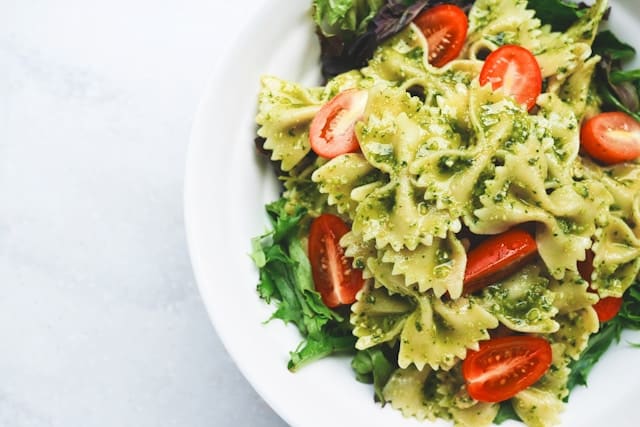Have you ever wondered what’s the secret behind the crusty, rustic beauty of Italian ciabatta with its intriguingly open crumb structure? This article will demystify the process of baking authentic Italian ciabatta. Uncover the fundamental ingredients, the correct use of temperature, and the baking techniques that will enable you to bake this extraordinary bread at home.
Perfecting the Dough
Before the ciabatta reaches the oven, the dough has a significant role to play. A well-prepared dough can be a game-changer in your ciabatta baking endeavor.
Also to discover : How to Achieve a Crispy and Tender Korean Fried Chicken with Gochujang Glaze?
Flour: The Foundation of Ciabatta
Start by selecting the right flour. A high-protein bread flour is the secret ingredient here. It gives ciabatta the structure and strength to hold onto the gas bubbles created by the yeast during fermentation, which in turn gives the bread its characteristic open crumb. For a truly rustic Italian touch, consider adding a bit of whole-wheat flour to your recipe.
Hydration: The Key to Open Crumb
Water also plays a vital role in achieving the perfect ciabatta. The ratio of water to flour in the dough, also known as hydration, has a direct influence on the bread’s crumb texture. Typically, ciabatta dough is highly hydrated, with water making up about 80% of the total weight of the flour. This high hydration results in a very sticky and challenging-to-handle dough, but don’t be discouraged. Embrace the stickiness, as it will eventually reward you with the ciabatta’s signature light and airy texture.
In the same genre : Can You Create a Gourmet Gravlax with Dill and Mustard Sauce at Home?
Yeast and Sourdough: The Raising Agents
The next step involves choosing the right raising agent. Instant yeast is a reliable choice for beginners. However, for a more authentic flavor, a sourdough starter, a natural mixture of flour and water where wild yeasts and bacteria grow, is a must. This not only gives your bread a pleasant, tangy flavor but also extends its shelf life.
Nailing the Fermentation
The fermentation time and temperature have a profound effect on the taste and structure of your ciabatta bread.
Time: The Flavor Creator
When you give your dough ample time to ferment, the yeast and bacteria present in the dough have enough time to consume the sugars in the flour and generate alcohol and carbon dioxide. This process, known as fermentation, results in the dough rising and greatly enhances the flavor of your bread. For ciabatta, let the dough ferment for at least 12 to 14 hours at room temperature before proceeding to the next step.
Temperature: The Balancing Act
Temperature control is equally crucial for the fermentation process. A warmer environment will accelerate the yeast’s activity, making the dough rise faster, while a cooler environment will slow the process down. The key is to find a balance so that your dough has enough time to develop flavors without overproofing.
The Art of Shaping and Scoring
Shaping and scoring the dough are crucial steps in your ciabatta baking journey. They can significantly impact the bread’s final appearance and texture.
Shaping: Handling with Care
One of the challenges that you’ll face while baking ciabatta is handling the highly hydrated and sticky dough. It’s essential not to deflate the dough during shaping. Gently stretch and fold the dough onto itself, forming a rectangle. Be sure not to overwork the dough as this can lead to a denser crumb.
Scoring: Letting the Steam Escape
Scoring, or making strategic cuts on the dough’s surface, is an important step before baking. It allows the steam to escape, controls the bread’s expansion in the oven, and gives the bread a beautiful, rustic look. For ciabatta, a few long, shallow cuts on the surface will do the trick.
The Baking Process
The baking process is where everything comes together – the dough transforms into a beautiful loaf of ciabatta.
Preheating the Oven: Preparing the Stage
Preheating your oven is essential for achieving a great oven spring and a crusty exterior. Heat your oven to a high temperature, about 475°F (245°C), before placing the dough inside.
Baking: The Magical Transformation
Bake your ciabatta for about 20 to 25 minutes, until it achieves a deep, golden-brown color. The high oven temperature will cause the water in the dough to turn into steam quickly, forcing the dough to rise rapidly, resulting in an open crumb structure. Remember, every oven is different, so keep an eye on your bread during the final minutes of baking.
Cooling: Patience Pays
Remove your ciabatta from the oven and let it cool on a wire rack for at least 30 minutes before slicing into it. This is a critical step that you shouldn’t rush. Cutting into hot bread can cause the interior to turn gummy.
Get ready to be rewarded with a loaf of ciabatta that strikes the perfect balance between a crispy exterior and a light, airy interior. Remember, while the process may seem complex initially, the key lies in patience and persistence. Happy baking!
Master the Final Touches
Your ciabatta journey isn’t over yet. There are some final steps to enhance the flavor and texture of your ciabatta bread.
Olive Oil: The Flavor Enhancer
In many traditional ciabatta recipes, olive oil is a prominent ingredient. When added to the dough, it imparts a rich, fruity flavor to the bread. Furthermore, brushing the bread with olive oil right before baking can result in a glossy, appetizing crust. Choose a high-quality extra virgin olive oil to make your ciabatta truly stand out.
Use a Baking Stone or Dutch Oven: Mimic a Bread Oven
To achieve that perfect crispy crust and well-cooked interior, consider using a baking stone or a Dutch oven. These tools can mimic a professional bread oven’s conditions, ensuring even heat distribution and providing the high, sustained heat necessary to bake your ciabatta to perfection.
Flour Dusting and Using a Bench Scraper: Handling the Dough
The ciabatta dough is very sticky due to its high hydration. To make handling easier, dust your hands and the work surface generously with flour. A bench scraper is another handy tool to handle and shape the dough without deflating it. Its sharp, flat edge helps in gently manipulating the dough and dividing it into ciabatta rolls if you wish.
Stretch and Fold: Building Gluten Strength
"Stretch and fold" is a technique used to build the gluten strength in the dough without overworking it. During the initial fermentation, stretch the dough from one side and fold it onto itself. Repeat this process several times, rotating the dough each time. This method will align the gluten strands, resulting in a stronger dough and better oven spring.
Conclusion: Savor the Experience
After following all these steps, you will be well on your way to mastering the art of baking Italian ciabatta, a bread defined by its rustic charm and distinctive open crumb.
The ciabatta’s high hydration, the selection of the right flour, a patient fermentation process at room temperature, and careful handling during shaping and scoring are essential factors for a successful ciabatta bread recipe. But perhaps just as important as these technical aspects is the love and passion you put into your baking.
Remember, baking is as much an art as it is a science. You may encounter a few challenges on your journey, whether it’s handling the sticky dough, scoring the dough just right, or waiting patiently for the bread to bake and cool down. But don’t be discouraged. Persistence is key, and each challenge is an opportunity for learning and growth.
Every step of the process – from mixing the dough to patiently watching it rise, from shaping the dough to the anticipation of waiting for it to bake in the oven – is meant to be savored. And the best reward of all awaits at the end of the journey: a homemade loaf of ciabatta, its exterior crispy and golden, its interior light and open-crumbed, wafting with the warm, irresistible aroma of freshly baked bread. Savor the moment, and then savor the bread. Happy baking!






